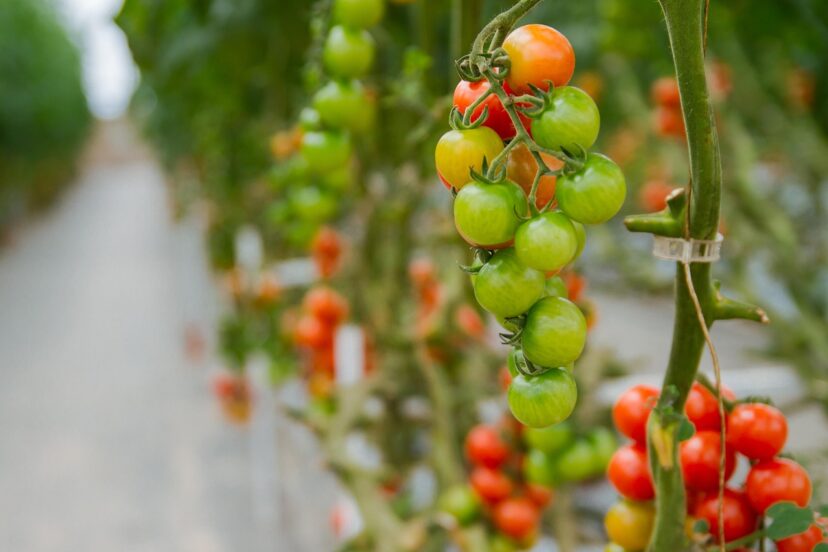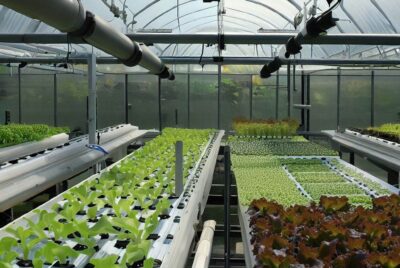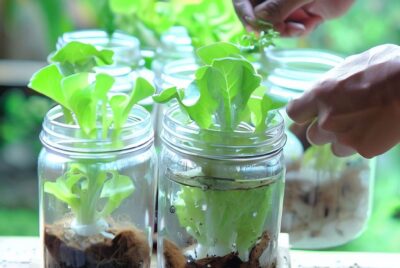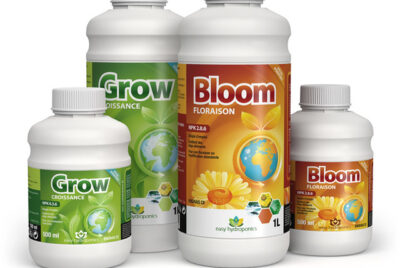How to Grow Hydroponic Tomatoes?
*We may earn a commission for purchases made using our links. Please see our disclosure to learn more.
Introduction
When starting as a hydroponic gardener, I have always been captivated by the idea of growing my own fresh and flavorful tomatoes right at home. Hydroponic tomato cultivation offers a unique and efficient way to achieve this goal, allowing you to bypass the limitations of traditional soil-based gardening. In this guide, I will share with you the essential steps and techniques to successfully grow hydroponic tomatoes. Whether you are a beginner or an experienced gardener, this article will provide you with valuable insights and tips to ensure a bountiful harvest of delicious tomatoes.
Benefits of Hydroponic Tomato Cultivation
Hydroponic tomato cultivation brings a multitude of benefits that make it an appealing choice for many gardeners. By adopting this innovative method, you can enjoy the following advantages:
- Superior Plant Growth and Yield: Hydroponic systems provide an optimal environment for tomato plants, resulting in faster growth rates and increased productivity compared to traditional soil gardening.
- Water and Resource Efficiency: Hydroponic systems use water more efficiently by recirculating nutrient-rich solutions, reducing water consumption and waste. Additionally, they require fewer pesticides and fertilizers, making them more eco-friendly.
- Disease Prevention: Since hydroponic systems eliminate soil, the risk of soil-borne diseases and pests affecting your tomato plants is significantly reduced. This allows for cleaner and healthier cultivation.
- Year-round Cultivation: With hydroponics, you can grow tomatoes regardless of the season or climate. This means you can enjoy fresh tomatoes all year long, even in regions with harsh winters.
- Control Over Nutrient Intake: Hydroponic systems give you precise control over the nutrient levels your tomatoes receive. This ensures they get the right balance of essential elements, resulting in healthier plants and tastier fruits.
Choosing Hydroponic Tomato Varieties
When it comes to selecting tomato varieties for hydroponic cultivation, there are a few factors to consider:
- Determinate vs. Indeterminate Tomatoes: Determinate tomatoes grow to a fixed size and produce fruits in a concentrated period, making them suitable for compact hydroponic setups. Indeterminate tomatoes, on the other hand, continue to grow and produce fruits throughout the season, requiring more space.
- Recommended Hydroponic Tomato Varieties: Some tomato varieties are better suited for hydroponic cultivation due to their growth habits and adaptability to controlled environments. Examples include ‘Celebrity,’ ‘Beefsteak,’ ‘Cherry Bomb,’ and ‘Roma.’
It’s important to choose tomato varieties that align with your space, goals, and taste preferences.
Setting up the Hydroponic System
To embark on your hydroponic tomato-growing journey, you’ll need to set up a suitable hydroponic system. Consider the following aspects:
- Selecting the Right System: There are several types of hydroponic systems available, including nutrient film technique (NFT), deep water culture (DWC), and drip irrigation systems. Each system has its advantages and considerations, so choose one that suits your space, budget, and level of expertise.
- Components of a Hydroponic System: A typical hydroponic system consists of a reservoir, a growing medium, a nutrient solution, a water pump, and appropriate plumbing. Understanding the function and importance of each component is crucial for a successful setup.
- Designing the Growing Space: Determine the size and layout of your hydroponic garden, considering factors such as available space, lighting conditions, and accessibility. Ensure the area is well-ventilated and can accommodate the desired number of tomato plants.
Nutrient Solution and pH Management
In hydroponic cultivation, providing the right balance of nutrients is essential for healthy tomato growth. Consider the following guidelines:
- Essential Nutrients for Tomato Plants: Tomatoes require a variety of nutrients, including nitrogen, phosphorus, potassium, calcium, magnesium, and trace elements. These nutrients can be provided through a carefully formulated hydroponic nutrient solution.
- Formulating the Nutrient Solution: Purchase a hydroponic nutrient solution specifically formulated for tomatoes or create your own using quality hydroponic fertilizer. Follow the manufacturer’s instructions for the appropriate concentration and adjust it as necessary based on the growth stage of your plants.
- Monitoring and Adjusting pH Levels: Tomatoes prefer a slightly acidic pH range of 5.5 to 6.5. Regularly measure the pH level of your nutrient solution using a pH meter and adjust it using pH up or pH down solutions to maintain the ideal range.
Lighting and Temperature Requirements
Proper lighting and temperature management play crucial roles in the success of your hydroponic tomato garden. Consider the following aspects:
- Providing Adequate Lighting: Tomatoes require intense and consistent lighting to thrive. Install high-quality grow lights, such as LED or fluorescent lights, above your plants to ensure they receive the required amount of light for optimal growth.
- Understanding Light Intensity and Duration: Tomato plants typically require around 12 to 16 hours of light per day during their vegetative stage and 8 to 12 hours during their flowering stage. Adjust the intensity and duration of your grow lights accordingly.
- Maintaining Optimal Temperature: Tomato plants thrive in temperatures between 65°F and 85°F (18°C to 29°C). Ensure your growing space maintains a suitable temperature range to promote healthy growth and fruit development. Proper ventilation and the use of fans or air conditioning can help regulate the temperature.
Transplanting and Seedling Care
Getting your tomato plants off to a strong start is crucial for their overall development. Follow these steps for successful transplanting and seedling care:
- Starting Tomato Seeds: Begin by germinating tomato seeds in a seed-starting tray filled with a sterile seed-starting mix. Keep the soil moist and provide adequate warmth and light until the seedlings emerge.
- Transplanting Seedlings to the Hydroponic System: Once the seedlings have developed a few sets of true leaves, carefully transplant them into your hydroponic system. Ensure the roots are fully submerged in the nutrient solution or properly supported by the growing medium.
- Seedling Care and Hardening Off: Provide a suitable environment for your transplanted seedlings, including appropriate lighting, temperature, and humidity levels. Gradually acclimate them to the hydroponic system by increasing their exposure to the nutrient solution and adjusting the light intensity.
Pruning and Training Hydroponic Tomatoes
Proper pruning and training techniques are essential for shaping and supporting your tomato plants. Follow these guidelines:
- Understanding Tomato Growth Habits: Tomatoes exhibit both determinate and indeterminate growth habits. Determinate varieties tend to stay compact and require minimal pruning, while indeterminate varieties benefit from regular pruning and training to control their growth and promote air circulation.
- Pruning Techniques for Enhanced Growth: Remove suckers (side shoots) that emerge from leaf axils to direct the plant’s energy toward fruit production. Regularly prune excessive foliage to increase light penetration and airflow, reducing the risk of diseases.
- Training Methods for Better Support: As your tomato plants grow, provide adequate support to prevent them from toppling over. Common training methods include using stakes, trellises, or tomato cages to keep the plants upright and promote better fruit development.
Pollination and Fruit Set
Ensuring proper pollination is vital for successful fruit set and development. Consider the following techniques:
- Understanding Tomato Pollination: Tomatoes can self-pollinate, but they benefit from the movement of air or gentle shaking to facilitate pollination. In a hydroponic system, manually pollinate your plants by gently vibrating the flower clusters with a small brush or by tapping the support structure.
- Creating a Pollinator-Friendly Environment: Encourage pollinators, such as bees, to visit your hydroponic garden by providing nearby flowering plants or using techniques like hand-pollination to transfer pollen between flowers.
Nutrient and Water Management
Proper nutrient and water management are critical for the overall health and productivity of your hydroponic tomato plants. Consider the following guidelines:
- Monitoring Nutrient Levels: Regularly test the nutrient levels in your hydroponic system using an electrical conductivity (EC) meter or a nutrient testing kit. Adjust the nutrient solution’s strength as needed based on the growth stage and plant’s requirements.
- Watering Techniques: Maintain a consistent watering schedule to prevent underwatering or overwatering. Avoid allowing the nutrient solution to become stagnant, as it can lead to nutrient imbalances and root diseases. Monitor the water level in the reservoir and top it up regularly to ensure an adequate supply.
- Flushing and Cleaning: Periodically flush your hydroponic system with fresh, pH-balanced water to remove any accumulated salts or mineral buildup. Clean and sterilize the system components to prevent the growth of algae or harmful pathogens.
Harvesting and Enjoying Your Hydroponic Tomatoes
The moment you’ve been eagerly waiting for has arrived—the time to harvest your hydroponic tomatoes! Follow these steps to ensure a successful harvest:
- Determining Tomato Ripeness: Tomatoes are ready for harvest when they reach their full color, firmness, and size. Gently squeeze the fruit—it should be slightly soft but not too mushy.
- Harvesting Techniques: Use a sharp pair of pruning shears or scissors to cut the tomatoes from the vine, leaving a small stem attached. Be careful not to damage the other parts of the plant.
- Storing and Enjoying Tomatoes: Store freshly harvested tomatoes at room temperature, out of direct sunlight, to allow them to fully ripen and develop their flavors. Avoid refrigerating them unless fully ripe, as it can affect their taste and texture. Use your homegrown hydroponic tomatoes in salads, sauces, or simply enjoy them fresh!
Conclusion
Growing hydroponic tomatoes is an exciting and rewarding journey that allows you to enjoy the taste of homegrown tomatoes throughout the year. By following the steps outlined in this guide, you can create an ideal environment for your tomato plants to thrive and produce abundant, flavorful fruits. From choosing the right varieties to setting up a hydroponic system, providing optimal conditions, and implementing proper care and maintenance, you have the knowledge and tools to become a successful hydroponic tomato gardener. So, roll up your sleeves, get started, and savor the joy of growing your own delicious tomatoes!
FAQs
Q1: Can I grow hydroponic tomatoes without any gardening experience?
Absolutely! Hydroponic tomato cultivation is suitable for both beginners and experienced gardeners. It provides a controlled environment that simplifies the growing process and minimizes the challenges associated with traditional soil gardening.
Q2: How long does it take to grow hydroponic tomatoes from seed to harvest?
The time required for tomatoes to grow from seed to harvest varies depending on the variety, environmental conditions, and care provided. On average, hydroponic tomatoes can be harvested between 60 to 90 days after planting.
Q3: Do hydroponic tomatoes taste different from soil-grown tomatoes?
Hydroponic tomatoes are known for their intense flavor, vibrant colors, and juicy texture. While the taste may vary slightly from soil-grown tomatoes, many gardeners find hydroponic tomatoes to be exceptionally delicious and full of flavor.
Q4: Can I reuse the hydroponic nutrient solution?
Reusing the hydroponic nutrient solution is possible, but it requires careful monitoring and adjustment of nutrient levels. Over time, the nutrient solution may accumulate salts or become imbalanced, affecting plant health. Flushing and replenishing the solution periodically is recommended.
Q5: Are hydroponic tomatoes more expensive to grow than buying them from a store?
Initially, there may be some setup costs involved in building a hydroponic system. However, in the long run, growing hydroponic tomatoes can be more cost-effective, especially if you consider the continuous supply of fresh, organic tomatoes and the potential savings on store-bought produce.




